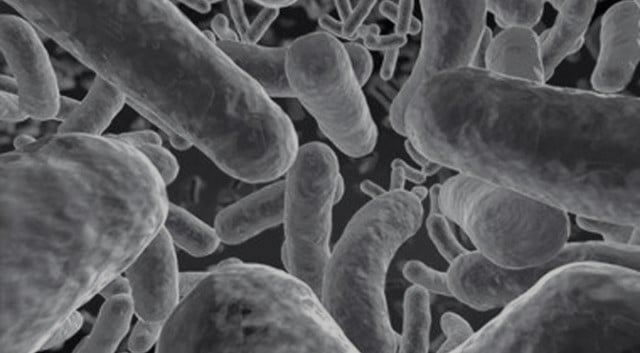Now Reading: Forensic Analysis of Narcotic Drugs
-
01
Forensic Analysis of Narcotic Drugs
Forensic Analysis of Narcotic Drugs
With the scientific progressions consistently; the new blends of medications are being concocted. The plants, and numerous other manufactured substances are aggregately utilized, and various types of medications are set up out of it. Thus, their characterizations, activity instruments and signs, results, measurements, course of organization, turn around responses are dissected and read inside and out for better agreement. The instrumental examination of medications utilizing mainstream techniques, for example, chromatography and mass spectrometry. These strategies require almost no measure of tests and are precise and dependable. The laws on opiate and psychotropic medications are outlined. Along these lines, this survey writing centers around investigation, law and history of opiate drugs and the view of narcotic drugs by the society.
Keywords: Narcotics, Drugs, Examination, Action Mechanism, Legal System.
History
Since antiquated occasions it is seen that the people and creatures look for escape from the inconvenience. People adapted continuously about normal substances accessible which gave the type of getaway from the world or mitigate to torment. From here, the opiates start which is noted from 1700.1 Opium and coca leaf were created and being used during 1700s. The two opium wars were battled among Chinese and British; one out of 1839-42 and another during 1856-60. In 1858, the importation of opium into china was authorized by the settlements of Tianjin, which fixed the pace of opium. Consideration, in any case, started to be centered around progress in remedial adequacy when diacetylmorphine was presented in 1898. In 1909, USA president Theodore Roosevelt proposed a worldwide examination on opium issue. In 1925, show was held which set limitations on creation and assembling of opiates. In 1932, the utilization of dicodid for hack started a few years after the fact and interest in dihydrogen codeine is at present being resuscitated. The opiate drugs have long back history and society consistently has attempted to boycott the creation and utilization of it. Investigating the viewpoint were these opiate drugs prompts any wrongdoing.2
Introduction
What are narcotic drugs?
A drug or substance that in specific fixed amount of doses dulls the senses, relieves the pain, and induced profound sleep but in excessive doses causes stupor, coma or convulsions.
1) Merriam-Webster
The term “Narcotic” is derived from the Greek word “narcotics”, which implies as state of lethargy or sluggishness. 3
Classification of Narcotic drugs
1. Natural
The origin of these substances occurs naturally as plants like roots, barks, leaves, flowers, fruits, seeds, resinous, and milky exudations.
For example: cannabis/ marijuana – charas, hashish oil, ganja, bhang – cocaine, opium.4
2. Semi-synthetic
The drugs which are prepared after processing crude and raw natural drugs are called semi-synthetic drugs. They are also known as Man-made drugs derived from natural sources.5
For example: heroin, smack, etc.
List of narcotic drugs
Opium
Heroin
Codeine
Oxycodone
Hydrocodone
Tramadol
Morphine
Hydromorphone
Fentanyl
Carfentanil
Mechanism of action – opioids
The opioids produce the effects on neurons by acting on receptors located on neuronal cell membranes.6 Three major types of opioid receptor mu, delta and kappa, were defined pharmacologically several years ago. The opioid receptors and many other membrane receptors are coupled to guanine nucleotide binding proteins known as G-proteins. They consist of three subunits that are a, b, and g. when the receptor is occupied, the subunit is uncoupled and forms a complex which interacts with cellular systems to produce an effect. Sites of action of opioid on neurons; presynaptic nerve terminal and postsynaptic neuron. The postsynaptic actions of opioids are usually inhibitory.7 The presynaptic action of opioids is to inhibit neurotransmitter release, and this is considered to be major effect in the nervous system8. Due to increased activity in primary sensory neurons, pain is normally associated. It is induced by strong mechanical or thermal stimuli, or by chemicals released by tissue damage or inflammation.9 Despite of extensive studies the understanding of cellular actions of morphine and another opioid is still incomplete. This is astonishing for a group of drugs with powerful effects and is a reflection of the complexity of the mechanisms involved in neurotransmitter release. 10
Forensic analysis of drugs facilitating sexual assault and other criminal acts
Investigative and analytical challenges:
The investigative officer should look around at crime scene for as many as physical evidences which can be collected. This includes to understand the probability of the amount of alcohol or drugs consumed, any prescription or medication recovered from the scene of crime.11 Many investigations have failed to unveil complete information on ingested drugs due to apprehension of some victims that admission to the voluntary use of a drug, such as cannabis.
Evidence collection:
Urine samples without any preservatives. 5ml blood tubes with sodium fluoride oxalate preservative should be used and blood test tubes should be completely filled. Apart from this unique identification information should be looked around for.12
Procedures and analytical strategy
Urine and blood analysis:
Volatile substances: analysis of these substances can be achieved by head space gas chromatography with either flame ionization detection or with mass spectrometry.
When headspace GC is used as the identification and detection method, special attention should be paid to the choice of conditions for sample preparation (sample pH, ionic strength, phase ratio, HS sample volume, incubation time and temperature), the GC oven-temperature programme and column specifications (polarity, film thickness) in order to optimize sensitivity and selectivity. When classical headspace equipment is not available, solid-phase micro extraction (SPME) is an alternative. Different SPME fiber types allow the adsorption of volatile and semi-volatile compounds onto the fiber, from which they are thermally desorbed in the GC injector. However, this technique requires a practical experience, particularly in DFSA and other DFC cases.
Non-volatile substances: Screening for drugs, metabolites and other non-volatile organic compounds should be performed using techniques able to acquire the full-scan spectrometric (MS) and spectroscopic (UV-Vis) data of the chromatographic eluate with a sufficient scan speed.13 Further, Guidelines for the forensic analysis of drugs facilitating sexual assault and other criminal acts comparisons should be made between unknown spectra and spectra obtained from authentic reference standards. The use of high-resolution mass- spectrometry (HR-MS) for the identification of unknowns by accurate
measurement of their mass-to-charge ratio and isotope pattern, if any, is also a viable alternative. Whatever the analytical technique adopted, its limitations (for example poor performance of polar and high molecular weight compounds for GC, or on thermolabile compounds) must be taken into the consideration. Target analysis for medicinal drugs and drugs of abuse is recommended by GC-MS and LC-DAD or, if available, LC-MS-MS. In such cases, the use of methods optimized for the target analyte is very useful.14 However, a general screening method by GC-MS, combining derivatization and comparison with a recent spectra library may help to identify low levels of specific metabolites.15 But as samples are most often collected late, very low concentrations of the substances are expected: hence it is highly recommended to use LC-MS-MS or GC-MS-MS due their higher sensitivity and selectivity.
Discussion
The narcotic drugs are generally available natural resources like plants and its parts. They are classified under as the Natural and man made by some external chemical processes. The route of administration of these drugs can be oral, injection or by inhaling.16 They generally are used as pain killers or way to escape temporary from the external surroundings. They have direct effects on neurons which in response reduces the pain. As consumption of narcotic drugs is not accepted in society and it is illegal. The role of forensic comes here, when any case comes where these narcotic drugs are involved the forensic analysis of the substances or samples obtained is done. The use of mass spectrometry and chromatography is done for the analysis of samples or any substance collected from the scene of crime. This is how these reliable, precise and high accuracy instruments are used.
Reference
1. Kraepelin E. Lecture XXVII: Irrepressible ideas and irresistible fears. Lect Clin psychiatry. Published online 1904.
2. Buxton J. The Historical Foundations of the Narcotic Drug Control Regime. Innocent Bystanders Dev Ctries War Drugs. 2010;(March):61-95. http://documents.worldbank.org/curated/en/144831468154466729/pdf/536410PUB0Inno101Official0Use0Only1.pdf
3. Sharma S. An Overview on Narcotic Drugs and Psychotropic Substances Act, 1985. J Forensic Sci Crim Investig. 2017;4(4):1-4. doi:10.19080/jfsci.2017.04.555644
4. Verma KL, Sharma M, Sarin RK. Forensic analysis of narcotic drugs – challenges and opportunities. Curr Sci. 2016;111(1):23-24. doi:10.18520/cs/v111/i1/23-24
5. Miller MA, Wirwicz DC. Drug Names, Mechanisms, Descriptions, and Contraindications. Vol 01.; 2018. doi:10.1891/9780826126672.ap01
6. Harper L, Powell J, Pijl EM. An overview of forensic drug testing methods and their suitability for harm reduction point-of-care services. Harm Reduct J. 2017;14(1). doi:10.1186/s12954-017-0179-5
7. Quiroz-moreno CD, Prata PS, Almeida JR De, Sof A, Augusto F. New Advances in Toxicological Forensic Analysis Using Mass Spectrometry Techniques Noroska Gabriela Salazar Mogoll on Rold a. J Anal Methods Chem. 2018;2018(27):17.
8. Kastenbaum H, Proe L, Dvorscak L. Forensic toxicology in death investigation. Crit Issues Alcohol Drugs Abus Test. 2019;(Snyder 1967):333-342. doi:10.1016/B978-0-12-815607-0.00024-1
9. Klein RFX, Testing S. Research On Drug Evidence June , 1992 – June , 1995. 1995;13:5-48.
10. Kuhar MJ. Pathways of Addiction. Vol 186.; 1998. doi:10.1097/00005053-199808000-00018
11. Drugs N, Substances P, Drugs TN. National Policy on Narcotic Drugs and Psychotropic Substances. Natl Policy Narc Drugs Psychotr Subst. Published online 1988:1-47. http://www.unodc.org/documents/southasia/webstories/NationalPolicyonNDPS_FINAL.pdf
12. Verma KL. Analysis and Detection of Precursor Chemicals Used in Preparation of Narcotic Drugs and Psychotropic Substances – A Forensic Perspective. J Forensic Res. 2015;06(02). doi:10.4172/2157-7145.1000274
13. Kranenburg RF, Verduin J, Stuyver LI, et al. Benefits of derivatization in GC–MS-based identification of new psychoactive substances. Forensic Chem. 2020;20(August):100273. doi:10.1016/j.forc.2020.100273
14. Cohrssen JJ, Lieberman CM. Cannabis : A Forensic-Medical Review. 1970;24(3).
15. Hazarika P, Jickells SM, Wolff K, Russell DA. Multiplexed detection of metabolites of narcotic drugs from a single latent fingermark. Anal Chem. 2010;82(22):9150-9154. doi:10.1021/ac1023205
16. Daniel H, Daniel H. Narcotic Drugs and Psychotropic Substances. Max Planck Encycl Public Int Law. Published online 2010:167-210. doi:10.1093/law:epil/9780199231690/e1069








